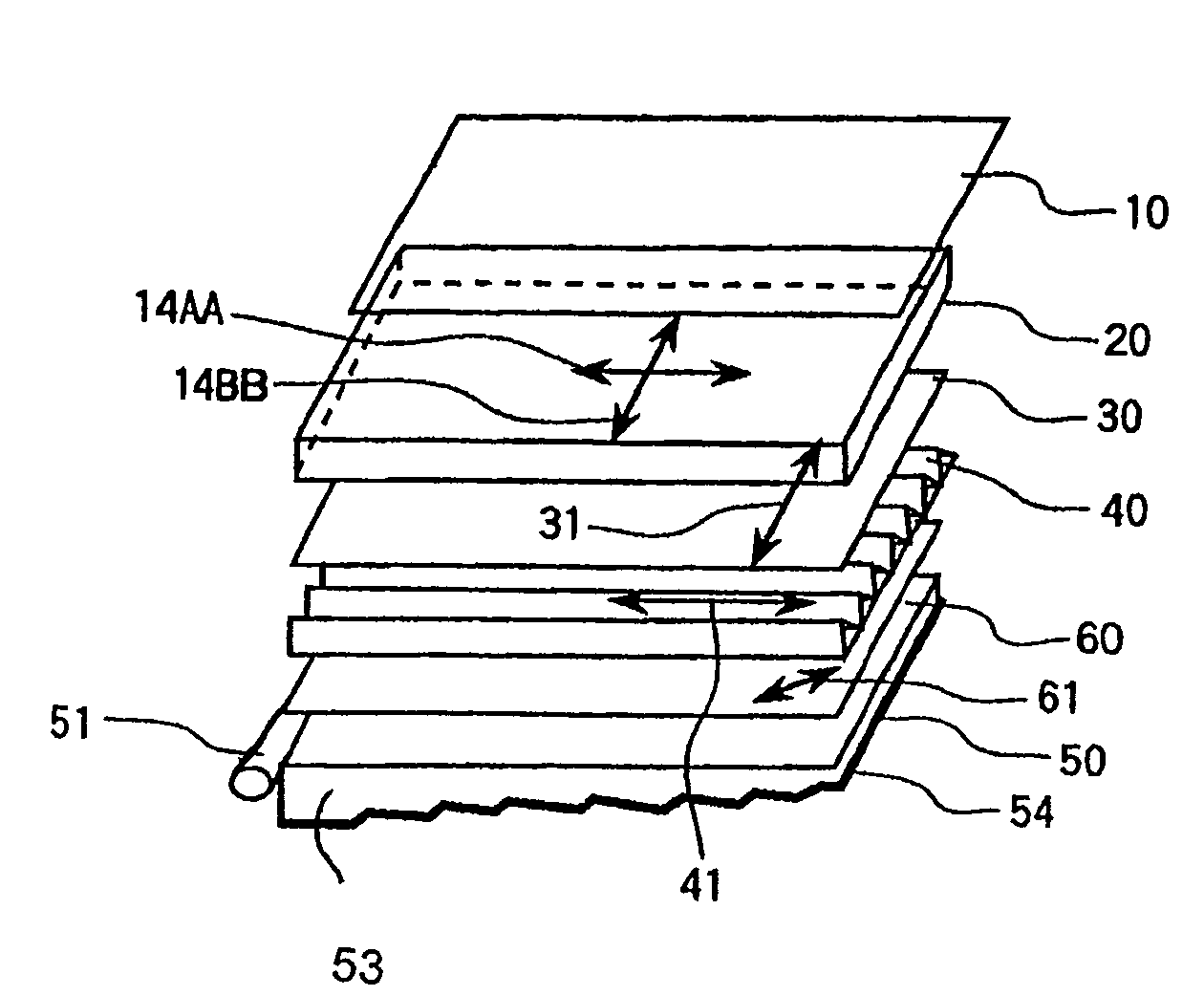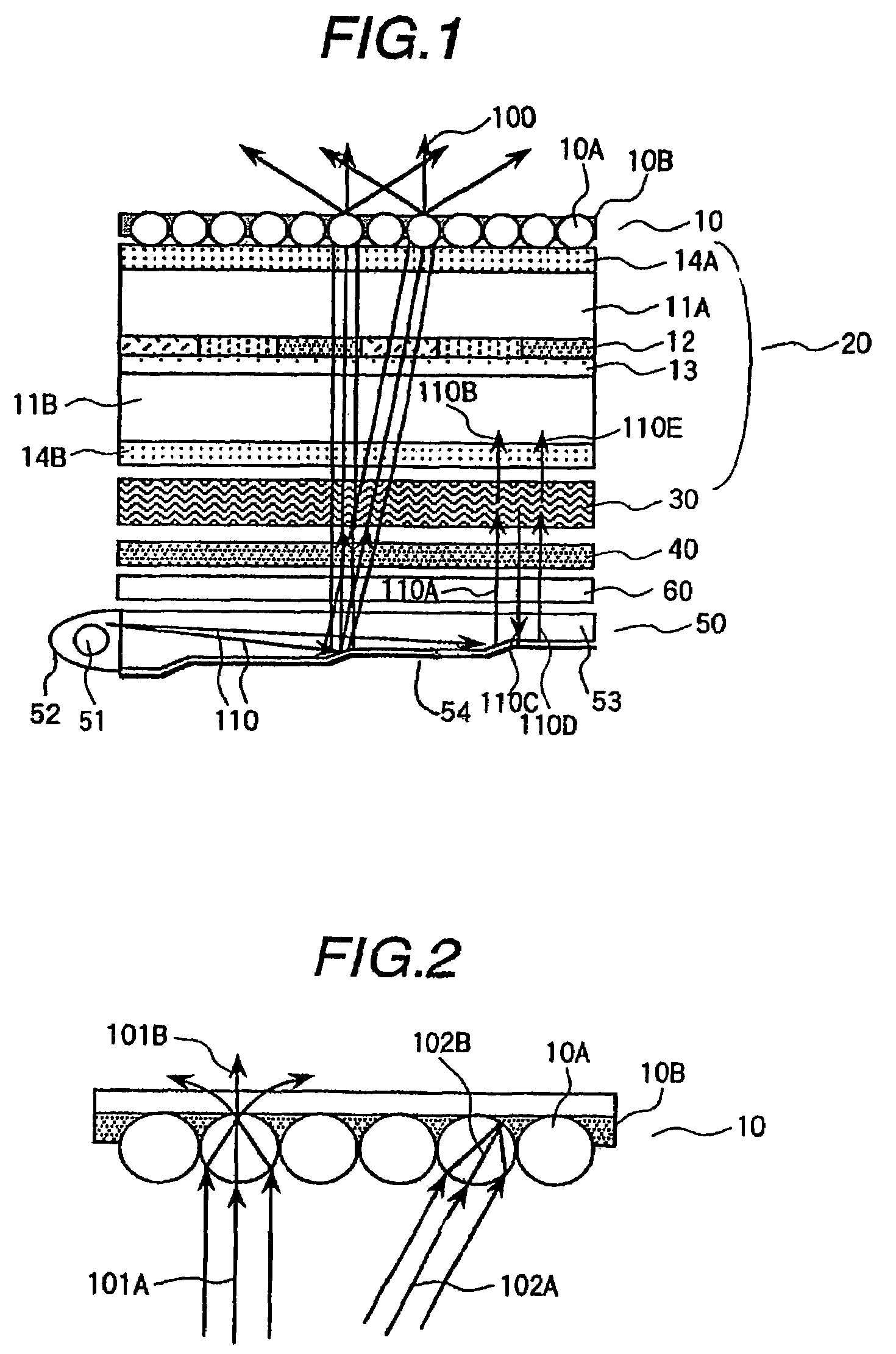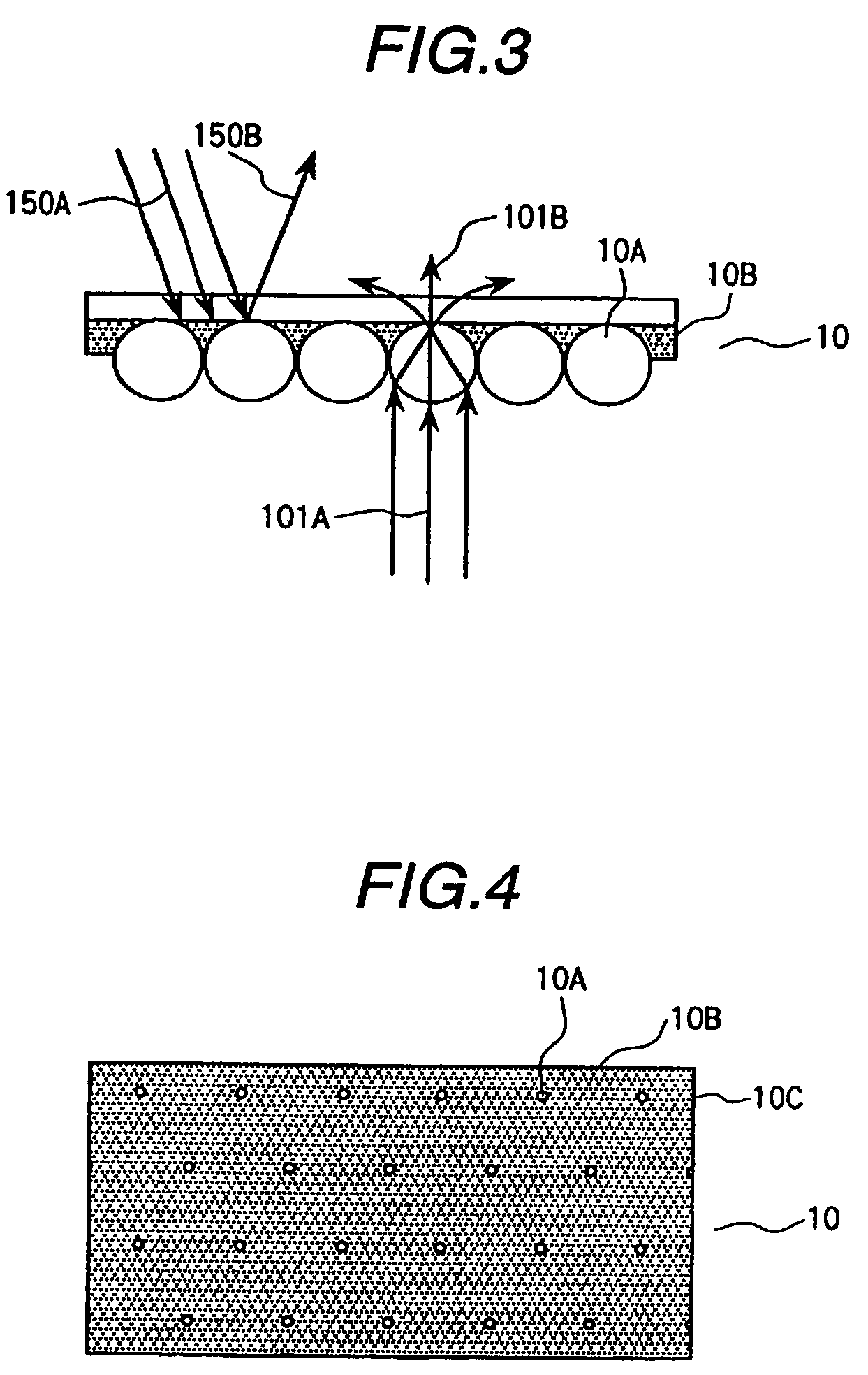Liquid crystal display device
a display device and liquid crystal technology, applied in non-linear optics, instruments, optics, etc., can solve the problems of thinness and lightness in weight, decrease in contrast ratio, and inferior display performance of liquid crystal display itself, and achieve low power consumption and wide viewing angle.
- Summary
- Abstract
- Description
- Claims
- Application Information
AI Technical Summary
Benefits of technology
Problems solved by technology
Method used
Image
Examples
first embodiment
[0121]the present invention will be explained with reference to FIG. 1.
[0122]The present embodiment comprises an illumination device 50 providing particularly collimated light arranged in a lateral direction of the figure, the reflective polarizer 31 indicated in FIG. 10 comprising a dielectric multilayered film as the reflective polarizing selective means 30, the liquid crystal display element 20, the light control element 40, the birefringent medium 60, and the screen 10 having a wide viewing angle.
[0123]As the illumination device 50 which is used in the present embodiment, any edge light type back light or direct-below type back light can be used. The illumination device 50 relating to the present embodiment is composed in a manner that, for instance, definite fine grooves in a perpendicular direction to the figure are provided at the rear plane of the waveguide 53, as indicated in FIG. 1, and metal (aluminum, silver, and the like) having a high reflective index is used for the r...
PUM
| Property | Measurement | Unit |
|---|---|---|
| wavelength | aaaaa | aaaaa |
| wavelength | aaaaa | aaaaa |
| incident angle | aaaaa | aaaaa |
Abstract
Description
Claims
Application Information
 Login to View More
Login to View More - R&D
- Intellectual Property
- Life Sciences
- Materials
- Tech Scout
- Unparalleled Data Quality
- Higher Quality Content
- 60% Fewer Hallucinations
Browse by: Latest US Patents, China's latest patents, Technical Efficacy Thesaurus, Application Domain, Technology Topic, Popular Technical Reports.
© 2025 PatSnap. All rights reserved.Legal|Privacy policy|Modern Slavery Act Transparency Statement|Sitemap|About US| Contact US: help@patsnap.com



